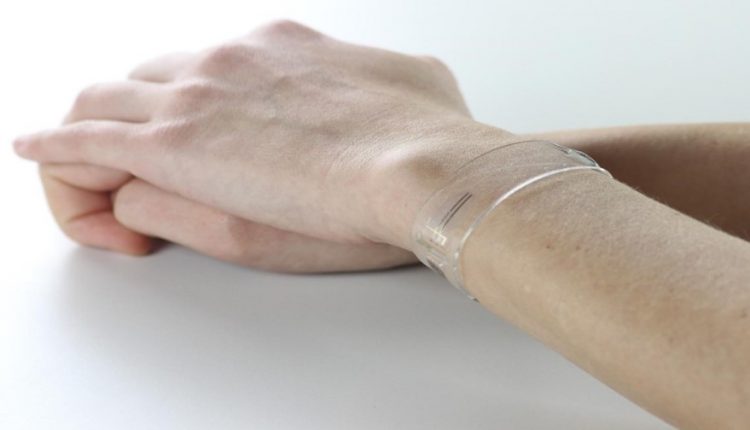As the market for wearable fitness and wellness trackers grows, consumers, healthcare professionals and manufacturers, alike, are seeking even more accurate devices. Today’s non-flexible wearables are limited in their capabilities and their accuracy.
Recently, researchers at the Institute of Photonic Sciences (ICFO) have demonstrated a new class of flexible and transparent wearable devices can conform to human skin and provide continuous and accurate measurements of multiple human vital signs. The devices can measure heart rate, respiration rate and blood pulse oxygenation, as well as exposure to UV radiation from the sun.
The device measures parameters and then stores and displays the data on a smartphone interface connected via Bluetooth to the wearable. The device can operate battery-free since it is charged wirelessly through the phone, reducing the overall weight of the device and contributing to its comfort as a wearable.
The bracelet adapts to the skin surface and provides continuous measurement during activity. It incorporates a flexible light sensor that can optically record the change in volume of blood vessels, due to the cardiac cycle, and then extract different vital signs such as heart rate, respiration rate, and blood pulse oxygenation.
The researchers also reported on the integration of a graphene health patch onto a smartphone screen, which instantly measures and displays vital signs in real-time when a user places one finger on the screen. The device uses ambient light to operate, contributing to low-power consumption for prolonged periods of use.
Finally, the researchers demonstrated a broad wavelength detection range with the technology, extending the functionality of the prototypes beyond the visible range. Using the same core technology, they fabricated a flexible UV patch prototype capable of wirelessly transferring both power and data, and operating battery-free to sense the environmental UV-index. The patch operates with low power consumption and has a highly efficient UV detection system that can be attached to clothing or skin, and used for monitoring radiation intake from the sun, alerting the wearer of any possible over-exposure.
ICFO’s advanced light-sensing technology uses two types of nanomaterials: graphene, a highly flexible and transparent material made of one-atom-thick layer of carbon atoms, together with a light-absorbing layer made of quantum dots.
The technology brings a new form factor and design freedom to the wearables’ field, making graphene-quantum-dots-based devices a strong platform for product developers.
Source: ICFO Newsroom

